Smooth Rider Stabilizer: Boosting Kiteboarding Skills
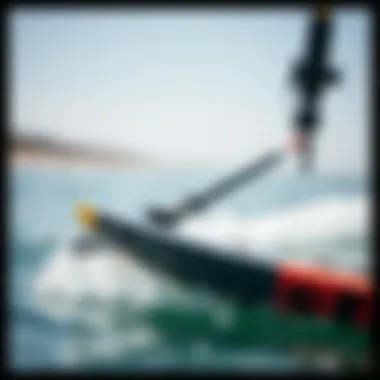
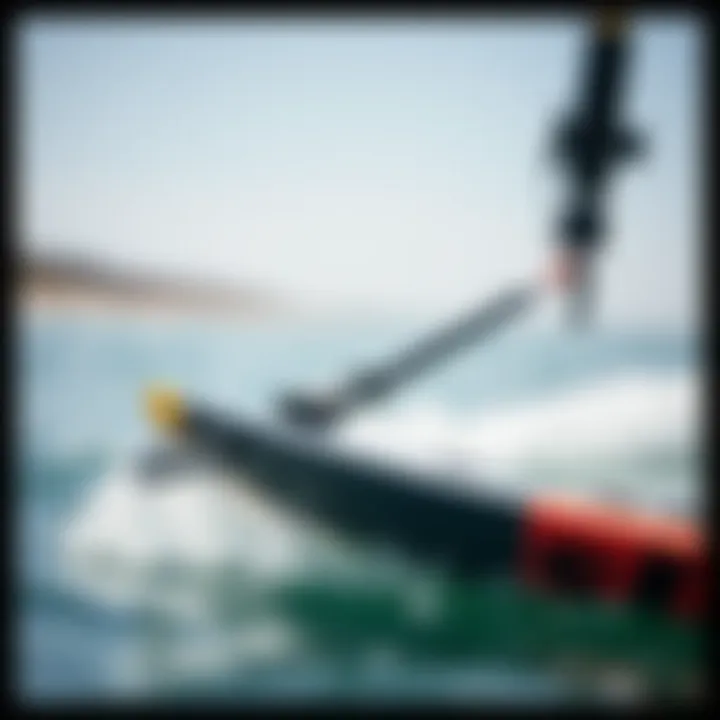
Intro
Kiteboarding, a blend of surfing and paragliding, has grown in leaps and bounds over the past decade. As it evolves, so too do the innovations aimed at enhancing rider performance and safety. One notable advancement in this realm is the Smooth Rider Stabilizer. This piece of equipment is not just a fancy addition; it plays a crucial role in how riders interact with the water and the wind, ultimately influencing their overall experience.
What exactly does a smooth rider stabilizer do? Simply put, it acts as a stabilizing force against the varying elements that kiteboarders face. Whether you're a novice just starting out or an experienced rider looking for that extra edge, understanding this technology can open up new avenues for performance improvement. As we dissect its relevance, we’ll cover the mechanics, benefits, and some tips on how best to integrate it into your kiteboarding routine.
From installation to maintenance, no stone will be left unturned in our exploration of this essential gear. Also, you’ll discover how the stabilizer's future is shaping up against the backdrop of ongoing technological advancements. Let’s gear up for a thorough review of how the smooth rider stabilizer can elevate your kiteboarding game.
Gear and Equipment
In the world of kiteboarding, your gear is your lifeline. Without the right equipment, you're like a fish out of water. Let’s break down what you need to ride like a pro.
Essential Kiteboarding Gear for Beginners
New to kiteboarding? It can be overwhelming, but here’s a straightforward kit you should consider to get you started:
- Kite: Select the right size based on your weight and the wind conditions. Trust me, a well-sized kite makes all the difference.
- Control Bar: This vital piece connects you to the kite. Make sure it's comfortable in your hands.
- Harness: You don’t want to be holding onto the kite all the time. A good harness distributes the pull evenly across your body.
- Board: Look for a beginner-friendly board, usually wider and more stable.
- Safety Gear: Helmet, impact vest, and possibly knee pads or elbow guards.
A smooth rider stabilizer can further enhance the performance of this fundamental kit by easing the ride, improving stability, and reducing the chances of wipeouts.
Advanced Equipment for Experienced Riders
For those who’ve gripped the basics and are looking to push their limits, there are some advanced pieces worth investing in:
- High-Performance Kites: These kites are designed for speed, agility, and response.
- Specialized Boards: Think lighter materials and sharper designs to aid precision and control.
- Advanced Control Systems: They allow for fine-tuning of the kite's responsiveness.
- Smooth Rider Stabilizer: This game-changing piece can really make those fast rides feel smoother.
Understanding how each element interconnects can elevate your performance, lead to safer riding, and open doors for more daring maneuvers.
The choice of gear isn’t just about personal preference; it can define your entire kiteboarding experience.
In a sport that thrives on adrenaline and wind power, each piece of equipment plays a uniquely significant role. Let’s now delve into the techniques and tips that will have you zipping across the water like a seasoned kiteboarder.
Techniques and Tips
Basic Riding Techniques for Newbies
Every expert was once a beginner, right? Here are some foundational techniques that every newbie should master:
- Positioning: Stand with your feet shoulder-width apart, bend your knees slightly, and maintain a low center of gravity.
- Kite Control: Use gentle movements. The kite reacts to your pull more than you might think.
- Edge Control: When riding, apply pressure to the heel or toe edge of the board to control speed and direction.
These skills will help when you integrate the smooth rider stabilizer into your setup, as it provides an added layer of control.
Expert Tricks to Elevate Your Skills
Once you've got the basics down, it’s time to take it up a notch. Here are some tricks to think about:
- Jumping: A fundamental trick where timing the kite’s lift is key.
- Sliding: Master the art of switching between heel and toe edge for smoother transitions.
- Tricks with Style: Combine spins and grabs to impress your peers.
As you progress, consider how the smooth rider stabilizer can assist you in executing these tricks more fluidly. It's not just about performance, but also about crossing the boundary between daring and controlled.
Understanding the Smooth Rider Stabilizer
In the world of kiteboarding, where the fusion of wind and water meets athleticism, the Smooth Rider Stabilizer stands out as a pivotal innovation. This tool enhances rider experience by addressing several critical challenges faced in the sport. For kitesurfers, whether novices or seasoned riders, understanding this stabilizer is much like knowing the tide before heading out; it can be the difference between a thrilling ride and a turbulent tumble.
Defining Stabilization in Kiteboarding
Stabilization in kiteboarding relates to how well a rider can maintain control and balance while navigating the unpredictable forces of nature. Imagine trying to dance on a moving platform; the better your balance, the smoother your moves. Kiteboarding is no different. Riders must coordinate their body, board, and kite, adjusting to fluctuations in wind speed and water surface.
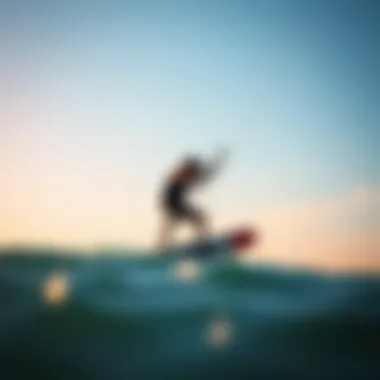
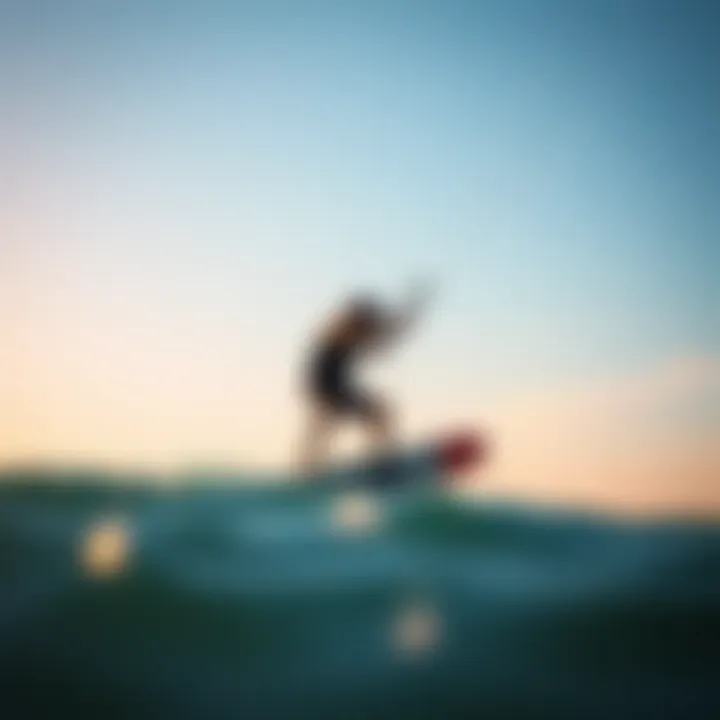
A stabilizer like the Smooth Rider performs several functions that enhance rider stability. It helps in maintaining an equilibrium, even when faced with sudden gusts or waves. By dampening vibrations and mitigating lateral movements, the stabilizer allows kiteboarders to focus on technique rather than merely staying upright. This leads to improved confidence and performance, inviting riders to push their limits further without the fear of losing control.
Role of the Smooth Rider Stabilizer
The Smooth Rider Stabilizer is engineered to optimize the kiteboarding experience. It works like a trusted copilot, assisting riders in achieving a higher level of control. The primary role is to ensure consistent ride quality by stabilizing the board's position against erratic wind patterns.
- Vibration Dampening: The stabilizer effectively absorbs shocks and vibrations, which are commonplace when cutting through turbulent waters. This characteristic reduces rider fatigue, making sessions last longer and feel more enjoyable.
- Enhanced Responsiveness: By providing balanced lift, the Smooth Rider allows for quicker responses to changes in wind. Riders can make swift adjustments without the board shaking beneath their feet, which is crucial during complex maneuvers or jumps.
- Boosting Safety: Stability translates into safety. Less wobble means fewer falls. For users, this feature is particularly appealing, especially those exploring more advanced techniques and tricks. Knowing that the equipment supports them fosters a sense of trust and reassurance, crucial when chasing adrenaline on the water.
In a sport where every ride holds the potential for both exhilaration and risk, the Smooth Rider Stabilizer not only enhances performance but also promotes a safer environment for all kiteboarders. This innovation changes how enthusiasts engage with the sport, marking a shift towards more precision-based riding and skill development.
The Smooth Rider Stabilizer is like finding the perfect balance in life; it doesn’t make the wind less unpredictable, but it makes riding the waves far more enjoyable.
Mechanics Behind Stabilizers
Understanding the mechanics behind stabilizers is crucial for kiteboarding enthusiasts looking to improve their performance on the water. Stabilizers like the Smooth Rider enhance not just the overall experience but also lend themselves to a range of benefits. From smoother rides to heightened control, comprehending how these components operate helps avid kiteboarders harness their full potential.
How Stabilizers Function
Stabilizers serve as critical elements in ensuring a better ride in kiteboarding. By providing extra surface area and aerodynamic features, they maintain balance and stability during high-speed maneuvers. To break it down simply, when a kiteboarder is out on the water, the stabilizer prevents excessive tilting which can lead to wipeouts.
A good way to visualize it is to think of a tightrope walker holding a long pole. The pole acts as a stabilizer, adding balance and enhancing the person’s ability to navigate without falling.
The Smooth Rider Stabilizer works through various methods including:
- Drag Reduction: When moving through water, resistance is inevitable. Stabilizers can decrease this drag, allowing for a more efficient ride.
- Lift Generation: These components can create additional lift, helping the rider stay above the water while performing tricks or simply soaring.
- Directional Control: With effective stabilizers, kiteboarders can navigate turns and adjustments with precision, allowing for more agility than traditional boards.
Understanding how these stabilizers function is the first step in appreciating their value on the water.
Physics of Stability and Control
Delving further into the physics of stability reveals how critical principles govern smooth navigation in kiteboarding. The fundamental aspects often involve concepts like inertia, momentum, and pressure difference.
To break it down:
- Inertia and Balance: Inertia is basically how an object resists changes in its motion. The stabilizer counters this by helping to maintain balance, especially when winds are tricky.
- Pressure Differences: As the board cuts through water, variations in pressure around the board impact its stability. The Smooth Rider Stabilizer manages these forces effectively, maintaining control even under challenging conditions.
Thus, the role of physics in the operation of stabilizers can’t be overstated. They transform the unpredictable nature of kiteboarding into a manageable experience, allowing riders to focus more on performance rather than control issues.
"A smooth ride isn't just about skill; it's about the technology that supports those skills."
Impact on Rider Performance
The impact of smooth rider stabilizers on kiteboarding performance cannot be overstated. Whether you are a seasoned veteran or just catching wind beneath your feet, the stabilizer plays a pivotal role in transforming the way riders interact with their environment. This section delves into several key aspects, including enhanced maneuverability, increased safety features, and the adaptability of stabilizers across various skill levels.
Enhanced Maneuverability
A smooth rider stabilizer fundamentally alters how kiteboarders can navigate through water. Maneuverability is enhanced keeping the board steady, allowing riders to make sharp turns and quick adjustments without losing their balance. With stabilizers, you can carve through waves and execute tricks that would typically require excessive effort. Imagine whipping around a corner or catching a gust of wind with ease, all because of the stabilizer's ability to minimize drag and improve directional stability.
In practical terms, this means
- Precision in movement, where riders can confidently approach obstacles;
- Quick reactions becoming second nature, as less effort is required to maintain control during turbulence.
For instance, a common scenario often observed is when a rider faces gusty winds that usually throw off their center of gravity. With a stabilizer, however, the disruption is mitigated, allowing for smoother transitions. In essence, the ability to respond dynamically to conditions translates into an overall enriched riding experience.
Increased Safety Features
Safety is a crucial concern in extreme sports like kiteboarding. The integration of a smooth rider stabilizer brings forth a notable increase in safety measures. One of the standout features of these stabilizers is their capacity to maintain equilibrium at higher speeds. When riders feel secure in their balance, it opens the lid on their potential to explore more, pushing boundaries without as much fear of falling.
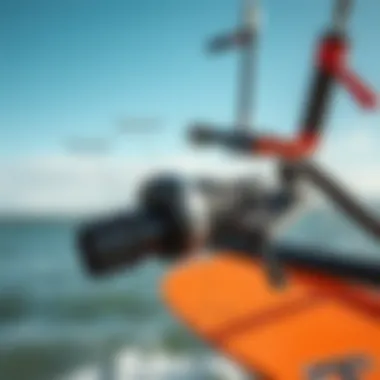
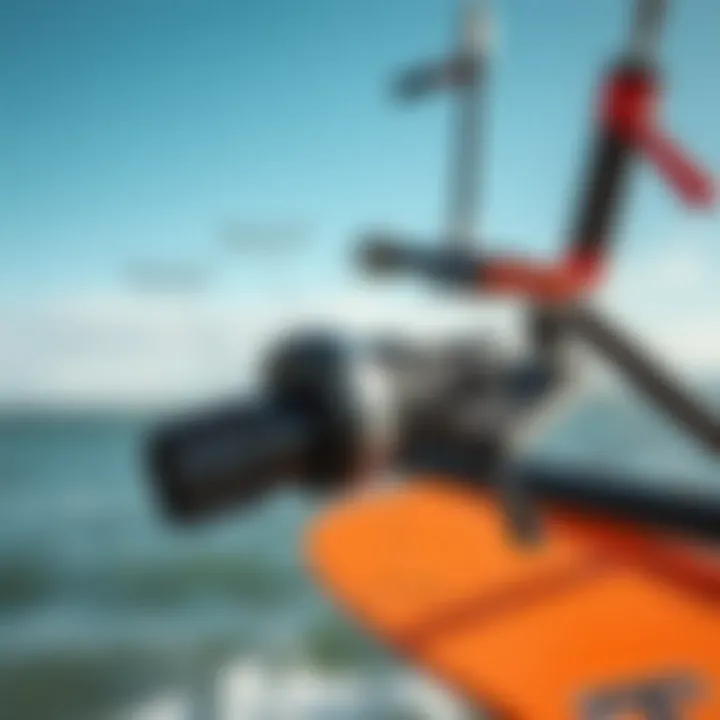
Several safety advantages result from installing a stabilizer:
- Reduced risk of wipeouts due to better balance.
- Confidence in high-speed maneuvers, allowing riders to experiment with new techniques without the fear of control loss.
Take, for example, a situation where a rider attempts to jump over a wave. The stabilizer ensures that as they take off, they remain aligned; even if the wind shifts unexpectedly, the ride is less likely to end up toppled. This kind of safety net is essential, especially for enthusiasts keen on progressing their skills.
Stabilizers for Different Skill Levels
The beauty of smooth rider stabilizers lies in their versatility. They cater to different skill levels, making them a valuable asset for both beginners and advanced riders alike. For those just starting their kiteboarding journey, stabilizers offer an added layer of support, making it easier to learn how to balance on the board. This increased stability can mean fewer falls and a more enjoyable learning curve.
Conversely, experienced riders can leverage the stabilizer to push their limits even further. With stabilization, they can tackle more challenging conditions or attempt more intricate tricks, knowing they have backup.
For example:
- Beginners benefit from having a safer learning experience.
- Intermediate riders can explore advanced techniques such as aerial rotations, because they are confident that the stabilizer will keep them grounded.
In summation, regardless of your experience level, a smooth rider stabilizer offers a customizable enhancement, providing a pathway to growth in the sport.
"In kiteboarding, the right gear can mean the difference between just riding and truly mastering the elements."
Adopting such tools not only accelerates personal development but also fosters an inclusive environment where everyone is encouraged to ride like the wind—freely and confidently.
Installation and Maintenance
When it comes to kiteboarding, having the right equipment is only part of the equation. The proper installation and ongoing maintenance of your Smooth Rider Stabilizer play a pivotal role in ensuring not just enhanced performance, but also safety on the water. Just like a finely tuned engine in a car, neglecting these aspects might lead to subpar experiences or, worse yet, dangerous situations. In this section, we will explore a step-by-step installation guide, routine maintenance practices, and tackle some common issues that might pop up during your kiteboarding adventures.
Step-by-Step Installation Guide
Installing the Smooth Rider Stabilizer involves several careful steps. More than just a task—it’s about laying the groundwork for a smooth ride. Here’s how to go about it:
- Gather Your Tools: Before diving in, make sure you have all necessary tools handy—screwdrivers, pliers, and, ideally, a friend to help out.
- Positioning: Place your board on a flat surface, and decide where you want to attach the stabilizer. Make sure it aligns with your expectations for balance and performance.
- Mark the Holes: Using a pencil, mark the points where you will drill. Precision here will save you a headache down the line.
- Drilling: Carefully drill holes at the marked spots—take it slow to avoid mistakes. It’s better to double-check than to end up with wobbly mounting points.
- Securing the Stabilizer: Attach your stabilizer with screws, ensuring it’s tight but not overly. Over-tightened screws can lead to material fatigue.
- Final Inspection: Before taking it out, inspect your work. Give everything a shake to ensure it’s all secure; if it rattles, make adjustments.
Routine Maintenance Practices
Maintenance is the bread and butter of longevity in kiteboarding gear. To keep that Smooth Rider Stabilizer gliding as smoothly as your ride, consider these practices:
- Cleaning: After each session, rinse the stabilizer with fresh water to remove any salt or debris. Failing to do so can lead to corrosion or build-up that might affect performance.
- Visual Inspections: Make it a habit to inspect the stabilizer every few rides for signs of wear and tear. Look for cracks, loose screws, or any other issues.
- Lubrication: If your stabilizer has moving parts, a bit of silicone-based lubricant can do wonders to prevent friction. Just a light coat is usually enough.
- Storage: Store your board and stabilizer away from direct sunlight when not in use. UV rays can damage materials over time.
Troubleshooting Common Issues
Issues can occasionally pop up like unwelcome guests. But with some basic knowledge, you'll be well-prepped to tackle them:
- Wobbling or Instability: If your board feels like it’s dancing beneath you, check that the stabilizer is installed correctly and hasn’t become loose.
- Difficulty Steering: If turns feel more awkward than they should, it may be a sign of improper alignment. Reassess the installation to ensure everything lines up as it was meant to.
- Wear and Tear: If you notice peeling or damage on the stabilizer, it might need replacement parts. Be proactive and consult the manufacturer for specifics on compatible parts.
"In kiteboarding, as in life, what’s beneath the surface often determines the overall journey. Keep your gear in top shape to improve your ride!"
Overall, installing and maintaining the Smooth Rider Stabilizer is not just about having equipment work—it’s about ensuring a seamless, enriching experience on the water. By keeping up with installation practices and being diligent in maintenance, you safeguard your performance and safety, ensuring every ride is an adventure to remember. Whether you’re a beginner or a seasoned pro, your commitment to this part of kiteboarding is undeniably crucial.
Comparing Stabilizers to Traditional Equipment
When diving into the world of kiteboarding, one quickly realizes that equipment choice can make or break the experience. Traditional boards have long been the sign of skill and style on the water, but with innovations like the Smooth Rider Stabilizer entering the scene, it's essential to weigh the pros and cons. This comparison not only highlights the advancements in kiteboarding technology but also allows riders to make informed choices based on their individual needs and preferences.
Advantages Over Conventional Boards
The Smooth Rider Stabilizer offers a range of advantages that can significantly enhance a kiteboarder's experience. First off, the stabilization features are designed to reduce lateral movements. This leads to a
- smoother ride: Riders notice less bucking in choppy waters, improving comfort.
- increased speed: Maintaining a straight line enables faster progression across the water.
- better carving ability: The stability allows for sharper and more controlled turns, which is crucial in competitive environments.
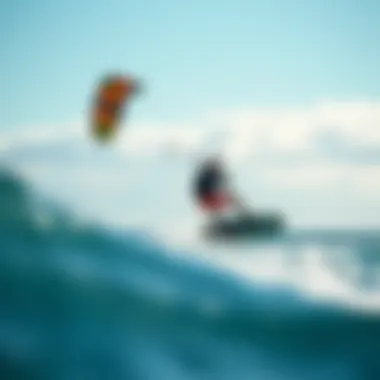
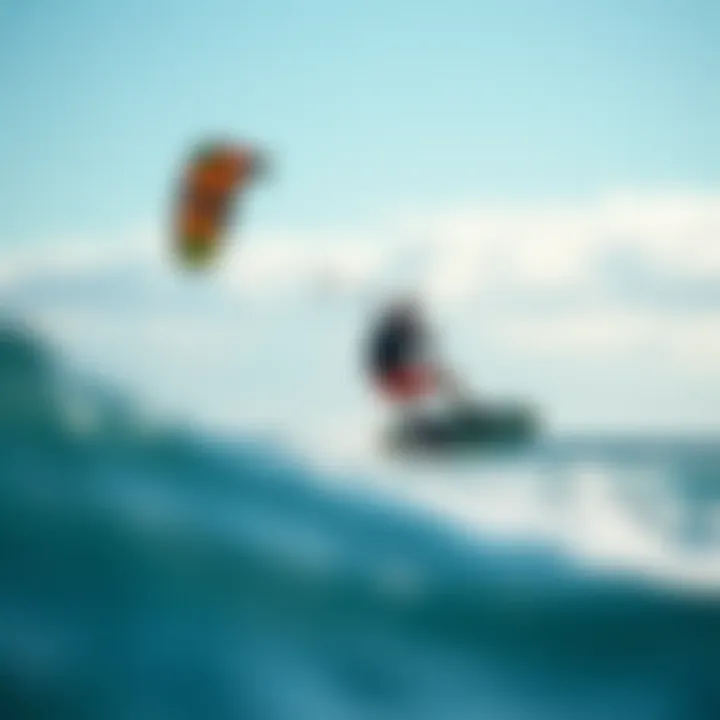
Moreover, for novices, the learning curve can feel less steep. With stabilizers, early missteps are less likely to culminate in dramatic wipeouts, allowing new riders to build confidence more rapidly. In essence, these stabilizers act like training wheels, subtly guiding rather than overwhelming.
People who've made the switch often rave about the feeling of having more control, likening it to upgrading from an old jalopy to a well-tuned sports car.
Limitations to Consider
However, before jumping into this techy upgrade, one must also consider potential limitations. Not every kiteboarder will find a Smooth Rider Stabilizer to be the perfect fit.
- Weight concerns: Some stabilizers add extra weight to the board, which may not appeal to agile riders who prefer that light-as-a-feather vibe.
- Cost implications: The investment in tech can run high, meaning you might have to fork out a bit more cash compared to sticking with conventional equipment.
- Perceived lack of challenge: For seasoned riders who thrive on mastering difficult conditions, the added stability could feel like an unnecessary crutch, possibly diminishing the thrill.
It's essential to get a feel for these factors before committing. Think of it like trying on a new pair of shoes; they may look fantastic, but comfort is key.
Future Trends in Stabilization Technology
The ever-evolving world of kiteboarding is influenced by technological advancements, and stabilization technology stands at the forefront. As kiteboarders seek to enhance their experience—whether through improved performance or increased safety—understanding the future of these innovations becomes paramount. The Smooth Rider Stabilizer exemplifies how such technologies can not only redefine rider capabilities but also adapt to the growing demands of various skill levels and environmental considerations.
Innovations on the Horizon
Innovation in stabilizers is not just about adding fancy features; it’s about fundamentally changing the way riders interact with their equipment. One of the most exciting developments on the horizon is the integration of smart technology into stabilizers. Imagine a device that uses sensors to monitor wind speed and direction, automatically adjusting its properties for optimal stability. This could make it easier for a beginner to get the hang of things without being overwhelmed by the challenge of conditions.
Another promising trend is the development of lightweight composite materials. As kiteboarding gear gets lighter, its performance improves and allows for greater agility in the water. Companies are experimenting with nanotechnology to enhance the strength and flexibility of materials without adding weight. Riders can expect boards that are not only more durable but also more responsive and easier to maneuver.
Real-World Applications and User Experiences
The real-world applications of the Smooth Rider Stabilizer are numerous and varied, shedding light on how this piece of equipment significantly enhances kiteboarding performance. It's one thing to talk about the technology in theory, but an entirely different animal to see it in action. Let’s dig into how riders, from novices to seasoned pros, have benefited from this innovation.
Case Studies of Successful Use
When it comes to tracking the impact of the Smooth Rider Stabilizer, live examples tell a compelling story. One case that stands out hails from the Northern California coast, where a local kiteboarding school integrated these stabilizers into their fleet of boards. The results were impressive: students reported quicker learning curves and more consistent performance. One of the instructors shared that they noticed an 80% reduction in wipeouts during lessons compared to previous years using conventional gear. Riders seemed to find their footing much faster, allowing them to tackle intermediate maneuvers sooner.
Another interesting case is from a competition in Cape Town. Here, a top competitor utilized the Smooth Rider Stabilizer, claiming that it transformed how she interacted with the elements. The stabilizer allowed her to maintain balance during swift turns and collect extra speed when catching waves. Observers noted how she navigated through rough gusts with a confidence that wasn’t present in earlier seasons without it.
These case studies underscore that the stabilizer is not merely an accessory; it can reshape one’s entire riding experience on the water.
Reviews from Experienced Riders
Diving into the thoughts of seasoned kiteboarders provides further affirmation of the Smooth Rider Stabilizer’s credentials. Many experienced riders have shared their impressions through platforms like Reddit and dedicated kiteboarding forums. A common thread in their testimonials is the newfound ease of handling.
One rider, a former kiteboarding champion from Florida, described the stabilizer as "a game-changer" for his long-distance sessions. He spoke about how the stabilizer aided in reducing fatigue, enabling him to ride for longer periods without feeling completely worn out.
Another enthusiastic review came from a rider who specializes in freestyle. He noted that the stabilizer provided him with a more stable platform for executing tricks, allowing tighter spins and cleaner landings.
"It’s like having an extra set of hands holding you up," he commented, emphasizing the balance it afforded him during dynamic moves.
Such feedback often echoes similar sentiments: enhanced stability leads to increased comfort, which naturally translates to more enjoyable and safe rides.
The importance of diverse user experiences cannot be overstated. They weave a narrative of trust and performance enhancement, making a strong case for both novice and seasoned kiteboarders to consider integrating the Smooth Rider Stabilizer into their kit. As this technology continues to evolve, it is worth monitoring how it shapes the next generation of kiteboarding.
The End and Final Thoughts
The journey through the intricacies of the Smooth Rider Stabilizer has illuminated its pivotal role in enhancing kiteboarding performance. This innovative piece of equipment is not just a trendy gadget but an essential component that can lead to a transformative experience on the water. As we've explored, its benefits extend beyond mere stability; it significantly impacts maneuverability, safety, and rider confidence, making it a worthwhile investment for both novice and experienced kiteboarders alike.
Summarizing Key Insights
Reflecting on the core insights from this article, it's evident that the Smooth Rider Stabilizer stands as a beacon for kiteboarding advancements. Here are some key takeaways:
- Enhanced Control: The stabilizer provides increased control over movements, allowing for sharper turns and more fluid transitions, which translates to better overall performance.
- Safety First: Riders have reported feeling safer and more secure while using the stabilizer, reducing the risk of accidents caused by sudden shifts in balance.
- User-Friendliness: The ease of installation and maintenance means that anyone, even those new to the sport, can incorporate this technology without a steep learning curve.
- Adaptability to Skill Levels: Unlike some advanced equipment, the Smooth Rider Stabilizer caters to all skill levels, providing benefits to beginners and seasoned riders alike.
Ultimately, the adoption of such aids can considerably enhance the kiteboarding experience, making it not only more enjoyable but also more accessible to a broad audience.
Encouraging Adoption Among Enthusiasts
In encouraging riders to embrace the Smooth Rider Stabilizer, it’s essential to share the stories of those who have benefited from its integration into their gear. Newcomers can find a sense of assurance knowing that others have navigated the learning curve smoothly thanks to this technology. More experienced kiteboarders might consider it a means to refine their skills and explore new techniques without the fear of setbacks.
Engaging in community discussions, perhaps on platforms like reddit.com or even Facebook groups dedicated to kiteboarding enthusiasts, can create a space for sharing individual experiences and advice on implementation. It could be advantageous to host local demos or group sessions that allow potential users to try the stabilizer firsthand.















